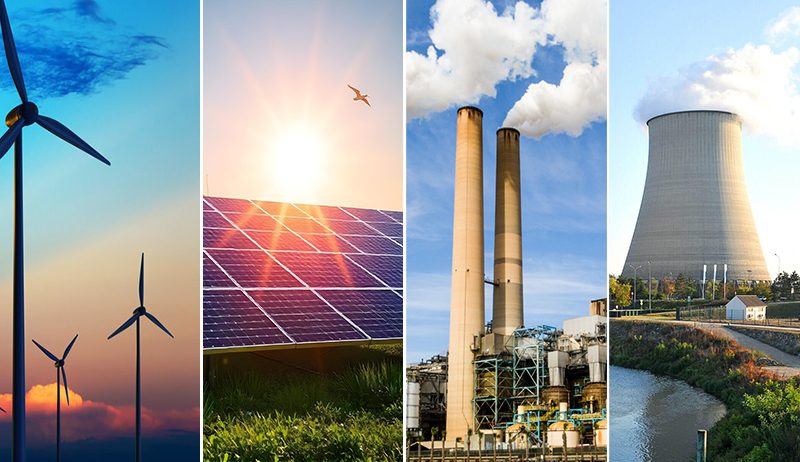Switching to electricity can help fight climate change by reducing the use of fossil fuels like coal, oil, and gas, which release harmful carbon when burned. That’s why, today, we’ll take a deep dive into electrification and its impact on the environment.
Using electricity from clean sources like solar, wind, and water, we can power our homes, cars, and factories without harming the environment.
For instance, electric vehicles don’t release harmful emissions like gas-powered ones. Using electric devices for heating, cooling, and cooking also cuts pollution compared to using gas-powered ones. These changes give hope for a cleaner and healthier future.
When more of our electricity comes from clean energy, we reduce the greenhouse gases in the air. This is important because these gases are the leading cause of global warming and climate change.
Electrification also makes energy use more efficient, meaning we use less but still get the same results. As more countries and industries switch to electricity, we can lower our carbon footprint and get closer to a healthier planet.
Electrification 101, What is Electrification?
Electrification means replacing technologies that run on fossil fuels like coal, oil, and natural gas with electricity for power. This change can help lower the amount of carbon dioxide (CO₂) released into the air, especially in transportation, buildings, and industries.
Using electricity is usually more efficient, requiring less energy to do the same tasks. As we use more clean energy to produce electricity, the impact of reducing emissions grows even more significant.
Tackling these areas’ emissions is vital to reducing carbon pollution and fighting climate change.
Electrification can lower emissions, but there are both opportunities and challenges in switching to electric power in cars, buildings, and industries. Policies can help speed up the move to electrification.
Electrification is one of the main strategies for cutting CO₂ emissions to reach Net Zero Emissions by 2050. Many emission cuts come from using more electric vehicles and installing heat pumps.
What are Greenhouse Gases, Global Warming, and Climate Change?

Greenhouse gases trap heat in the atmosphere. While some come from natural sources, most now come from human activities.
Since the Industrial Revolution in the late 1800s, these gases have increased due to actions like burning fossil fuels—such as petrol in cars or coal for energy. Carbon dioxide (CO₂) is released into the air when we burn these fuels.
For over a century, greenhouse gases have been building up faster than they can disappear, and scientists believe this has caused the Earth’s average temperature to rise. This temperature rise is called global warming.
Global warming leads to environmental changes, such as more extreme weather, unpredictable rainfall, droughts, and seasonal shifts.
These effects are known as climate change. As global warming continues fast, climate change is expected to worsen, making life on Earth more challenging.
Electrification and Its Impact on the Environment| How Can Electrification Reduce Emissions?
Electrification is becoming one of the most effective ways to lower carbon emissions, a significant cause of climate change. To see how electrification helps reduce emissions, we can look at different sectors like transportation, buildings, and industry.
By replacing systems that run on fossil fuels with electric ones, we can see significant environmental improvements.
However, the overall impact of electrification depends on cleaning up the power grid using renewable energy sources, which is essential for cutting greenhouse gas emissions.
Transportation: Replacing Fossil Fuels with Electric Vehicles
One of the most significant contributors to carbon emissions in transportation is petrol or diesel vehicles. Electrifying this sector means switching from cars with internal combustion engines (ICEs) to electric vehicles (EVs).
EVs produce no tailpipe emissions, so they don’t release harmful gases like carbon dioxide (CO₂) and nitrogen oxides (NOx) that traditional vehicles do. This reduces pollution and improves air quality, especially in crowded cities.
EVs are also much more efficient, converting a higher percentage of their energy into movement, so they use less energy overall.
Electrification isn’t just for personal cars; buses, trucks, and public transport are starting to go electric. This shift is essential because heavy-duty vehicles, like trucks and buses, make up a large portion of transportation emissions.

Buildings: Electrification of Heating, Cooling, and Appliances
In buildings, emissions come from using fossil fuels like natural gas for heating, cooling, and running appliances. Electrifying buildings means replacing gas-powered systems with electric ones.
For example, electric heat pumps are a much more efficient way to heat and cool homes. They use electricity to move heat instead of burning fuel, which can significantly reduce the carbon footprint of homes and commercial buildings.
Electric water heaters, especially heat pumps, are also more efficient than gas-powered ones, and induction stoves provide a cleaner alternative to gas cooking.
Even older buildings can be upgraded to electric systems, further reducing emissions. Though the upfront costs can be high, the long-term savings from lower energy bills and reduced emissions make it a smart investment in the fight against climate change.
Industry: Electrification of Industrial Processes and Equipment
Fossil fuels are heavily used in industry for processes like steelmaking, chemical production, and machinery operation, all of which contribute significantly to global emissions.
Electrifying industrial equipment, such as forklifts and machines, can reduce emissions and improve workplace conditions by reducing noise and improving air quality.
Some industrial processes, like steel production, require high temperatures that usually rely on coal or natural gas. But newer technologies, like electric arc furnaces, can replace coal-based methods, cutting emissions significantly.
Although still in development, these advancements offer a way to decarbonise industries that are harder to electrify.
Decarbonising the Grid: The Key to Emission Reductions through Electrification
The success of electrification depends on how clean the electricity is. Electrification will partially impact the power grid if it still relies on fossil fuels like coal and natural gas. That’s why decarbonising the grid—shifting to renewable sources like solar, wind, and hydropower.
The shift to electric cars, appliances, and industrial equipment can eliminate emissions in countries with cleaner grids. The cleaner the grid, the greater the environmental benefits of electrification.
As renewable energy becomes a more significant part of the grid, energy storage systems, like batteries, will be necessary for balancing supply and demand.
These systems and smart grids allow electricity to be used more efficiently and help ensure clean energy is available, even when the sun isn’t shining or the wind isn’t blowing.
Electrification as a Climate Solution
Electrification is a powerful solution for reducing transportation, buildings, and industry emissions. However, its full potential will only be realised if the power grid becomes cleaner by using renewable energy sources.
As more countries adopt clean energy and electrify key sectors, electrification will significantly contribute to global climate goals, such as achieving Net Zero Emissions by 2050.
Though challenges remain, electrification can lead to a cleaner, more sustainable future for everyone with suitable investments and policies.
What Sectors Are Electrifying?
Transportation, buildings, industry, and farming are starting to use more electricity. Electric cars are becoming more popular in transportation, and companies are switching to electric trucks and buses to improve air quality by reducing pollution.
New homes and businesses now have electric appliances like heat pumps, water heaters, and electric or induction stoves, and older buildings are being updated with more efficient and reliable electric technologies.
Switching to electric machines like forklifts or rock crushers in factories and warehouses can improve air quality and reduce noise. Using electric equipment such as tractors, sprayers, and pumps on farms can save energy and reduce maintenance costs.
Reduce the Environmental Impact of Your Energy Use

ENERGY STAR and Energy Efficiency
Energy efficiency is using less energy to do the same job, avoiding high energy bills and unnecessary pollution. Many products, homes, commercial buildings, and industrial facilities consume far more power than needed.
For example, energy-efficient LED light bulbs certified by ENERGY STAR use up to 90% less energy than regular bulbs to light up a room.
Behind each ENERGY STAR label is a product, building, or home that is independently certified to use less energy, achieving emissions reductions to reduce air pollution and help protect the climate.
Switch to Renewable Energy Resources
Clean energy generally means energy generated using renewable sources that emit no or negligible air emissions—solar and wind energy, for example—and clean distributed generation, such as combined heat and power.
As the price of wind and solar energy continues to fall, more and more people are purchasing renewable energy.
Many businesses are also installing renewable energy and combined heat and power in their buildings to save them money, reduce their environmental impact, and provide greater control of their energy use.
Contact Cyanergy for any assistance or talk to an expert.







